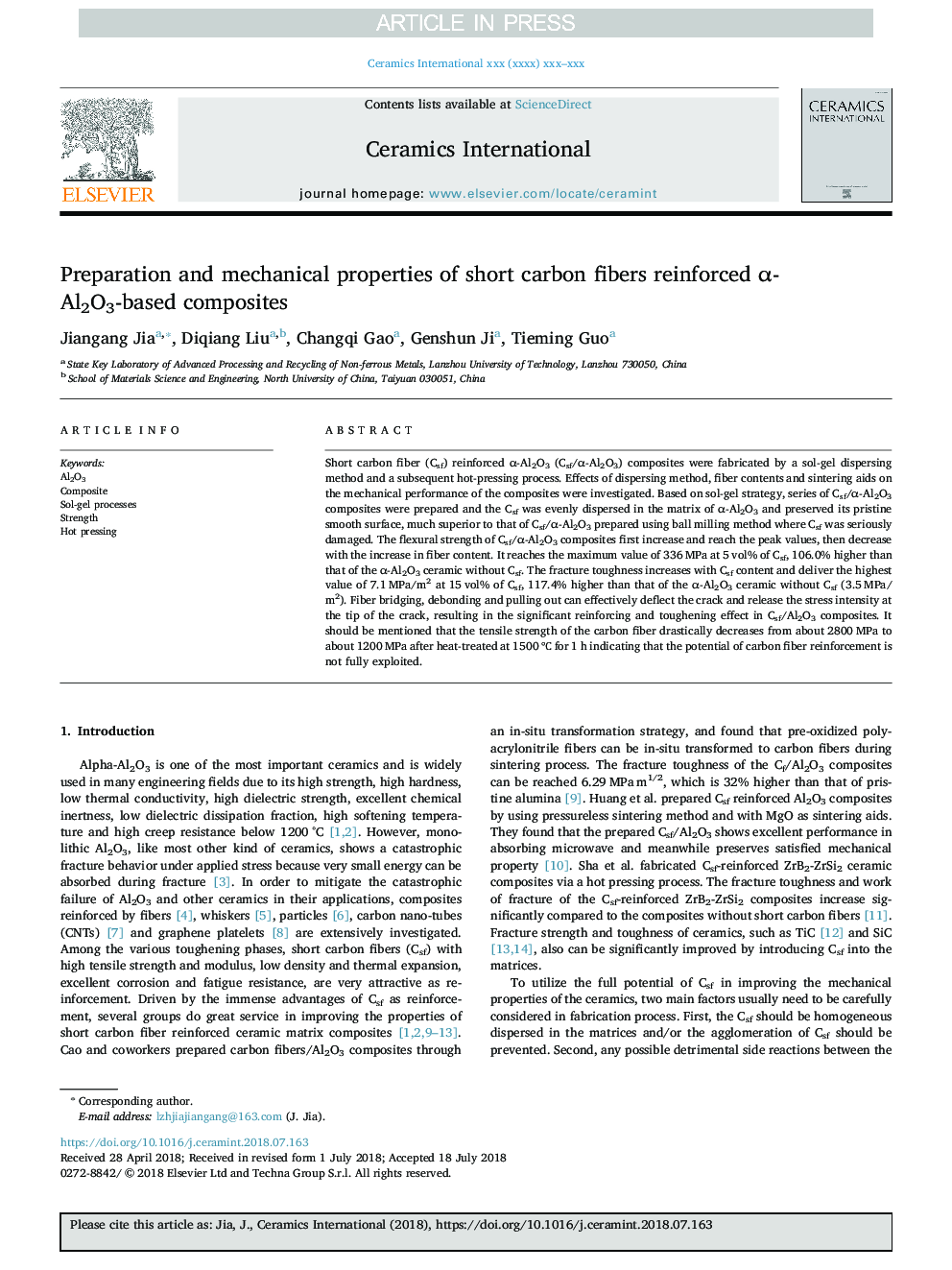| Article ID | Journal | Published Year | Pages | File Type |
|---|---|---|---|---|
| 10155396 | Ceramics International | 2018 | 7 Pages |
Abstract
Short carbon fiber (Csf) reinforced α-Al2O3 (Csf/α-Al2O3) composites were fabricated by a sol-gel dispersing method and a subsequent hot-pressing process. Effects of dispersing method, fiber contents and sintering aids on the mechanical performance of the composites were investigated. Based on sol-gel strategy, series of Csf/α-Al2O3 composites were prepared and the Csf was evenly dispersed in the matrix of α-Al2O3 and preserved its pristine smooth surface, much superior to that of Csf/α-Al2O3 prepared using ball milling method where Csf was seriously damaged. The flexural strength of Csf/α-Al2O3 composites first increase and reach the peak values, then decrease with the increase in fiber content. It reaches the maximum value of 336â¯MPa at 5â¯vol% of Csf, 106.0% higher than that of the α-Al2O3 ceramic without Csf. The fracture toughness increases with Csf content and deliver the highest value of 7.1â¯MPa/m2 at 15â¯vol% of Csf, 117.4% higher than that of the α-Al2O3 ceramic without Csf (3.5â¯MPa/m2). Fiber bridging, debonding and pulling out can effectively deflect the crack and release the stress intensity at the tip of the crack, resulting in the significant reinforcing and toughening effect in Csf/Al2O3 composites. It should be mentioned that the tensile strength of the carbon fiber drastically decreases from about 2800â¯MPa to about 1200â¯MPa after heat-treated at 1500â¯â for 1â¯h indicating that the potential of carbon fiber reinforcement is not fully exploited.
Related Topics
Physical Sciences and Engineering
Materials Science
Ceramics and Composites
Authors
Jiangang Jia, Diqiang Liu, Changqi Gao, Genshun Ji, Tieming Guo,
